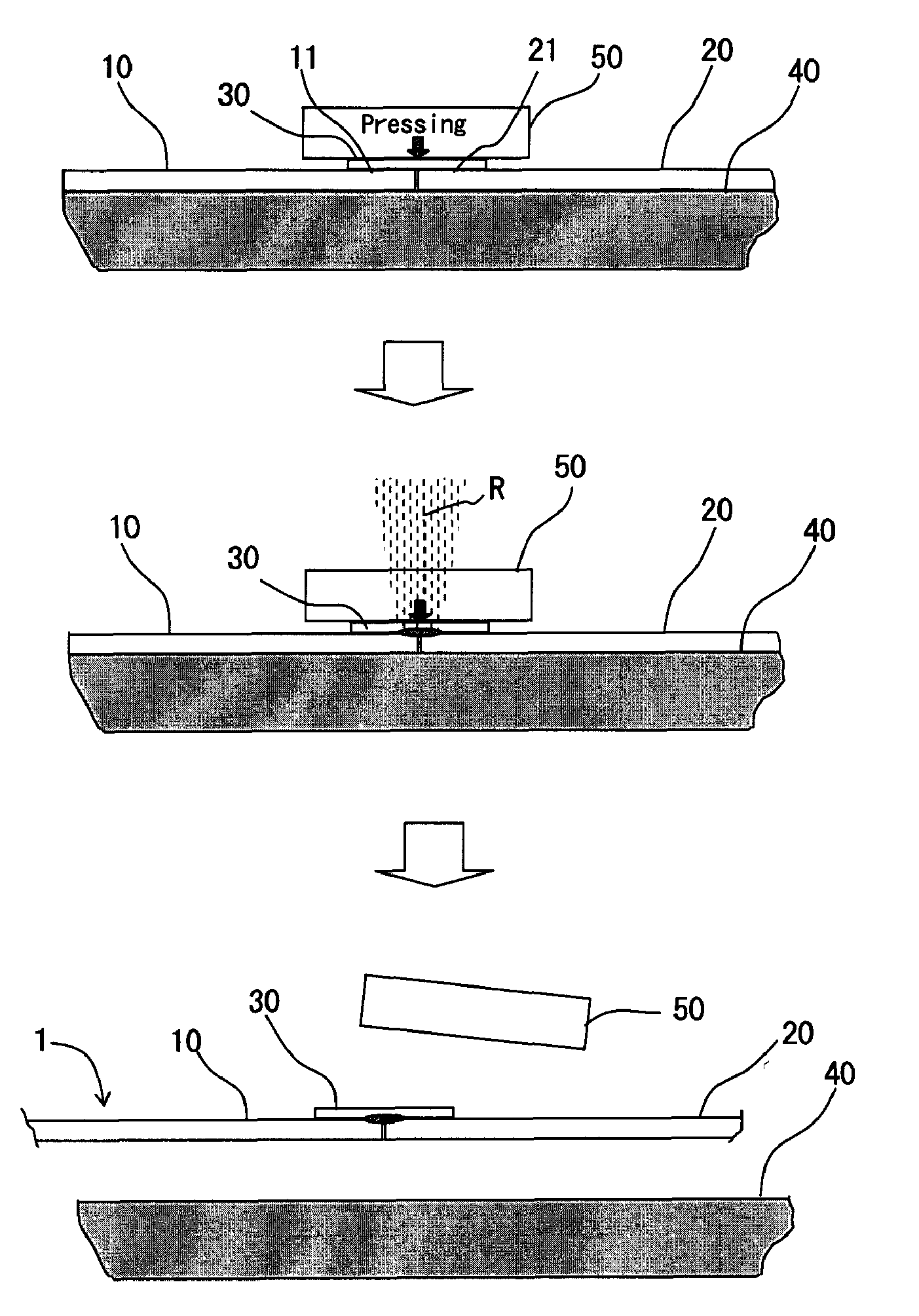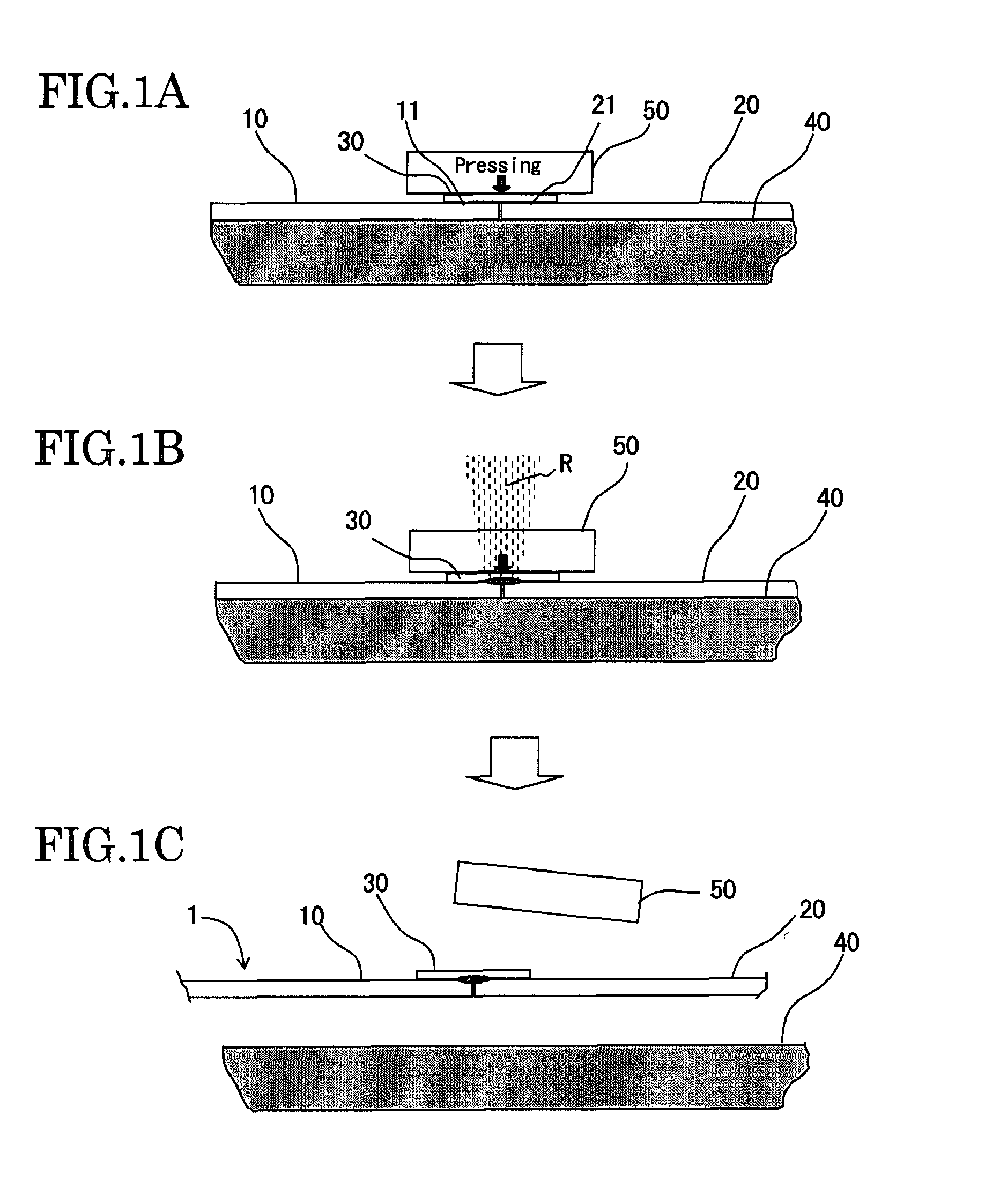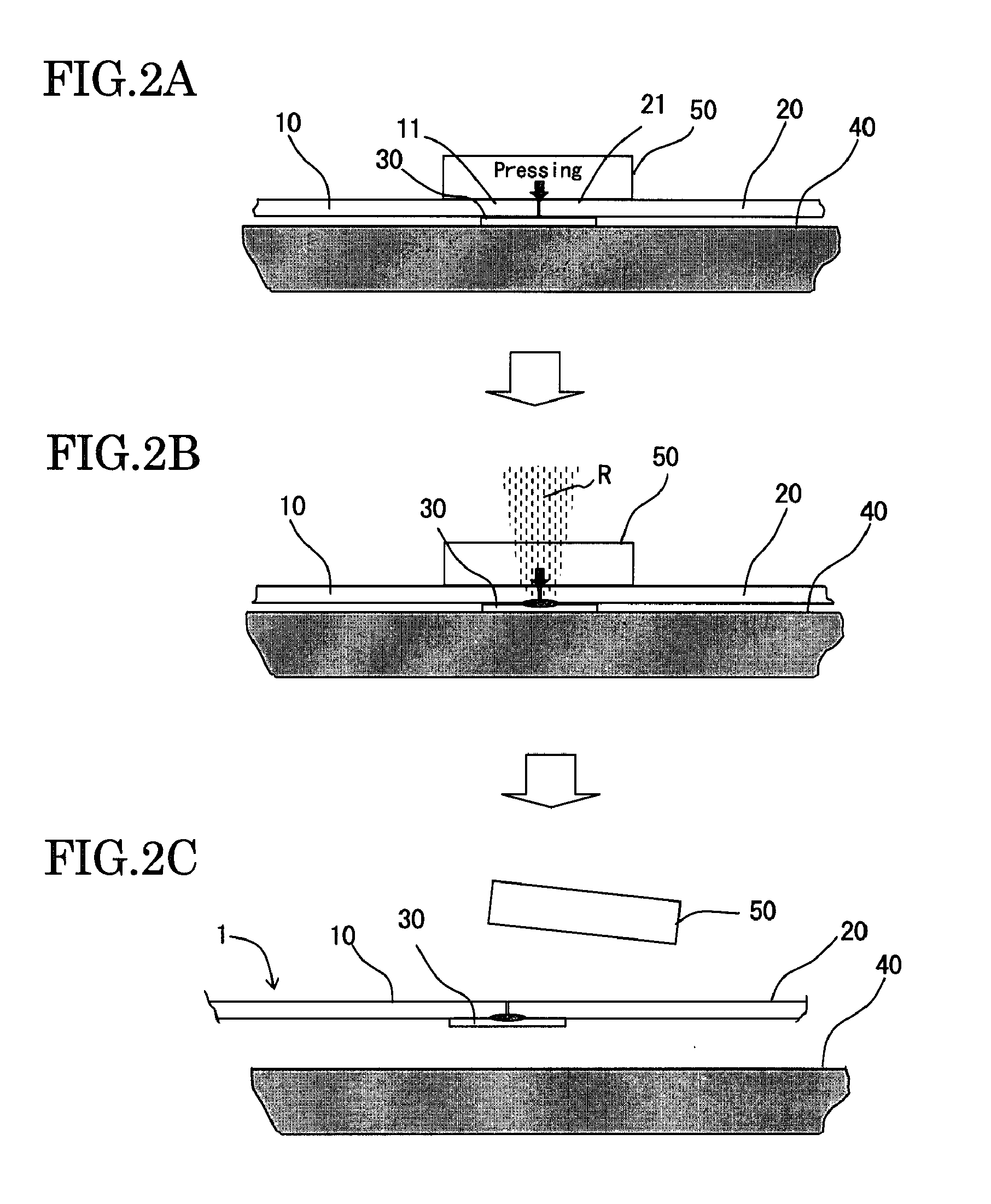Method of producing sheet joined body
a technology of joining body and sheet, which is applied in the direction of application, transportation and packaging, and other domestic objects, can solve the problems of deteriorating appearance, chemical agents contaminated with foreign substances, and contaminated alkali solutions, etc., and achieves improved joint strength, high joint strength, and easy improvement of strength
- Summary
- Abstract
- Description
- Claims
- Application Information
AI Technical Summary
Benefits of technology
Problems solved by technology
Method used
Image
Examples
example 1
[0091]A sheet joined body according to Example 1 was manufactured using the following members.
(Members to be Used)
[0092]Sheet member A: Polyethylene terephthalate resin (PET) sheet material (50 mm (length)×50 mm (width)×50 μm (thickness))[0093]Sheet member B: Polyethylene terephthalate resin (PET) sheet material (50 mm (length)×50 mm (width)×50 μm (thickness))[0094]Joining sheet C: Polyethylene terephthalate resin (PET) sheet material (50 mm (length)×3 mm (width)×50 μm (thickness))
[0095]The sheet joined body of Example 1 was manufactured by joining the above working members by a laser light irradiation device described below.
(Working Laser Light Irradiation Device)
[0096]Laser light source: Semiconductor laser[0097]Laser light wavelength: 940 nm[0098]Power: 20 W[0099]Spot diameter of the laser light: 2 mmφ[0100]Scanning speed: 100 mm / s
[0101]The sheet joined body of Example 1 was manufactured using the above members and laser light irradiation device in the following manner (see FIG. ...
example 2
[0110]A sheet joined body of Example 2 was manufactured in the same manner as in the production of the sheet joined body of Example 1 except that laminate sheet materials (50 mm (length)×50 mm (width)×50 μm (thickness)) obtained by laminating a 25 μm-thick stainless steel (SUS) layer and a 25 μm-thick polyimide resin (PI) layer were used as the above two sheet materials to be joined instead of the polyethylene terephthalate resin (PET) sheet materials, the joining sheet (50 mm (length)×3 mm (width)×50 μm (thickness)) was bonded to the SUS layer side and the scanning speed of the laser light spot was changed to 50 mm / s.
[0111]It was confirmed that the obtained sheet joined body of Example 2 produced an anchoring effect between the joining sheet and the surface of the SUS layer.
[0112]Moreover, the section of the joined part was observed, to find that welding caused by heat conduction from the SUS layer was observed in the PI layer, thereby confirming that the welding of the PI layers o...
example 3
[0116]80-μm-thick lengthy sheet materials made of a triacetylcellulose resin (TAC) (width: 1330 mm) manufactured by Fuji Photo Film Co., Ltd. were used as the two sheet materials to be joined instead of the polyethylene terephthalate resin (PET) sheet materials and the same TAC sheet (1330 mm (length)×6 mm (width)×80 μm (thickness)) was prepared as the joining sheet.
[0117]A photo-absorbing agent (trade name: “Clearweld LD120C”, manufactured by Gentex Company) was applied to the center of one surface of the joining sheet in an amount of 10 mL / mm2 to have the width of the applied area being about 3 mm, and laser welding was performed in the similar manner as in Example 1.
[0118]The pressing of the joining sheet was performed under a pressure of 15 kgf / cm2 instead of about 0.1 MPa.
[0119]The welding operation was carried out in the same condition as in Example 1 in the point that the sheets were scanned by laser light (spot diameter: 2 mmφ) having a wavelength of 940 nm at a speed of 100...
PUM
| Property | Measurement | Unit |
|---|---|---|
| tension | aaaaa | aaaaa |
| pressure | aaaaa | aaaaa |
| pressure | aaaaa | aaaaa |
Abstract
Description
Claims
Application Information
 Login to View More
Login to View More - R&D
- Intellectual Property
- Life Sciences
- Materials
- Tech Scout
- Unparalleled Data Quality
- Higher Quality Content
- 60% Fewer Hallucinations
Browse by: Latest US Patents, China's latest patents, Technical Efficacy Thesaurus, Application Domain, Technology Topic, Popular Technical Reports.
© 2025 PatSnap. All rights reserved.Legal|Privacy policy|Modern Slavery Act Transparency Statement|Sitemap|About US| Contact US: help@patsnap.com



